Tim FreemanOctober 21, 2020
Tag: powder , FT4 Powder Rheometer , Screw Feeders
In powder handling industries, screw feeders are routinely used to control the flow of material from a hopper into the subsequent stage of a process. The accurate and consistent feeding of materials into reaction systems, mixers and other processing equipment is necessary to maintain optimal conditions, and to generate products of the required quality at the required rate.
However, predicting feed rates has historically relied on engineering estimation based on experience and the extrapolation of and pre-existing information on performance – either from pilot scale trials, or from data collected at earlier installations. This can lead to equipment that does not meet the target design requirements, and result in sub-standard operation or, in extreme cases, complete process failure.
In an attempt to more accurately predict the expected feed rate of powder in a given feeding process, one approach is to use statistical, multivariate models to evaluate the relationships between powder behaviour and process performance. However, many studies are hampered by the use of overly simplistic characteristics of the bulk powder, such as angle of repose, or flow through an orifice, which do not necessarily represent the conditions that the powder is subjected to in the feeder. A method of accurately quantifying a powder’s response to process-relevant conditions is required for the development of a robust statistical model.
The FT4 Powder Rheometer® is a universal powder tester that provides automated, reliable and comprehensive measurement of bulk material characteristics. This information can be correlated with process experience to improve processing efficiency and aid quality control. Specialising in the measurement of Dynamic Flow properties, the FT4 also incorporates a Shear Cell, and the ability to measure Bulk properties such as density, compressibility and permeability.
This study demonstrates how to generate a design and operating model based around robust measurements of rheological properties of powders and standard Multiple Linear Regression (MLR) analysis.
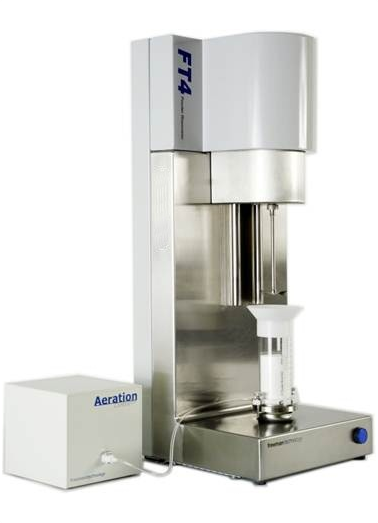
FT4 Powder Rheometer® from Freeman Technology
Quantifying Feeder Performance
Five powders (Calcium Hydroxide, Maltodextrin, Milk Protein, Cellulose and Calcium Citrate) were run through two different screw feeders to determine the volumetric feed rate (L/hr) delivered at an auger rotation speed equivalent to 80 Hz. The volumetric flow rate (in L/hr) was calculated from measurements of mass flow rate (in kg/hr) and poured density.
The two screw feeders that were used were a DIWE-GLD-87 VR, full flight single-screw feeder using tube No. 3 (Figure 1), and a DIWE-GZD flat bottom double-screw feeder using a 12x13.5mm tube with a conical core (Figure 2) (Gericke AG, Switzerland).
The five materials were also evaluated using an FT4 Powder Rheometer, and MLR was performed to evaluate the relationship between parameters measured by the FT4 and the volumetric feed rate. The resulting model was tested by comparing predicted volumetric feed rate for two additional powders (Lactose and Cement) with the actual rate achieved in the feeders.
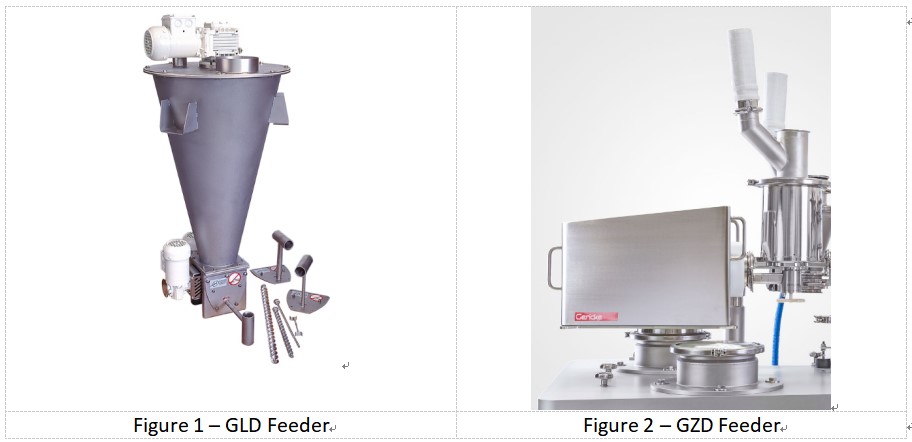
Images courtesy of Gericke AG.
Measured Test Data

Multiple Linear Regression
MLR is a mathematical process that attempts to define a model quantifying a dependent parameter (y) – in this case volumetric feed rate – in terms of influential independent variables – in this case the measured powder properties.
The process generates a p value for each parameter, which indicates the probability that the parameter’s contribution to the relationship is statistically significant. The lower the p value, the more likely that the parameter influences the relationship. For the purposes of this study, a p value of 0.1 was considered the upper limit. Parameters with p values higher than this were eliminated to ensure a robust relationship.
Results - GLD Feeder
For the GLD feeder, MLR produced the following relationship.
Feed Rate = 49.54 FRI – 13.81 SE + 163.8
(R2 = 0.9466)
R2 is a measure of the ‘goodness of fit’ between the model and the data. Values closer to the upper limit of 1, indicate a better fit. This relationship suggests that, of all the powder properties measured, only two Dynamic Flow properties are needed to robustly predict feeder performance – Flow Rate Index (FRI) and Specific Energy (SE). FRI describes how a powder’s resistance to flow changes as a function of flow/shear rate, and is simulated by increasing or decreasing the tip speed of the helical blade of the powder tester. FRI values greater than 1 indicate that the resistance to flow is greater when the powder is made to flow more slowly. All powders evaluated in this study generated an FRI > 1 and therefore all exhibiting this “shear thinning” behaviour.
SE reflects how a powder flows in an unconfined state and is primarily influenced by mechanical interlocking and friction between particles.
Figure 3 shows the measured feed rates for the five powders along with the values predicted by the derived model. As suggested by the R2 value, the predicted values accurately describe the performance of the powders in the GLD feeder. When the relationship was used to predict the behaviour of the two additional materials (Figure 4), an R2 value of greater than 0.9 was still obtained when incorporating data for the all seven materials, confirming close agreement between predicted and measured performance and demonstrating the feasibility of predicting volumetric feed rate from powder flow properties.
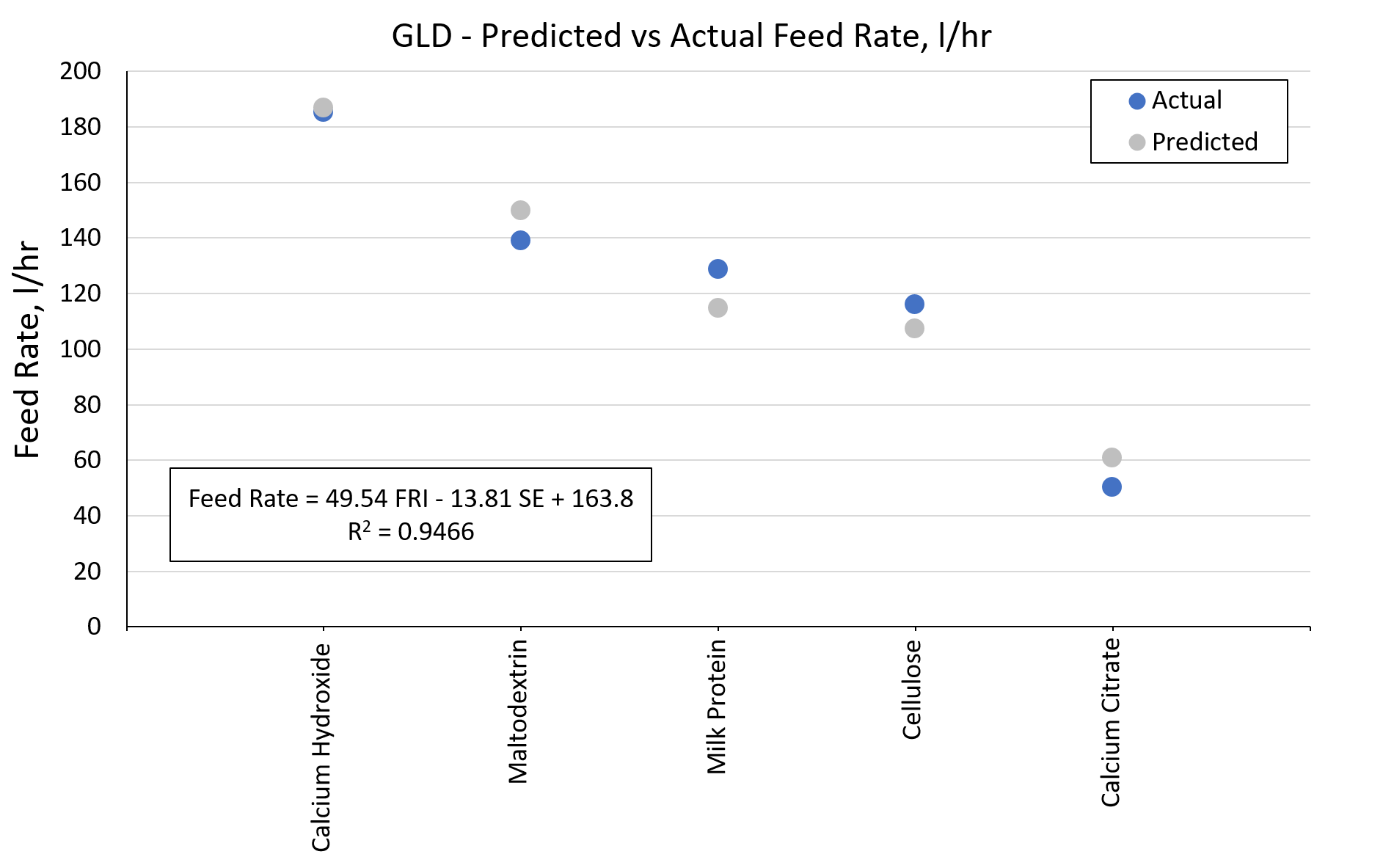
Figure 3 - Predicted vs Actual Feed Rate in the GLD Feeder
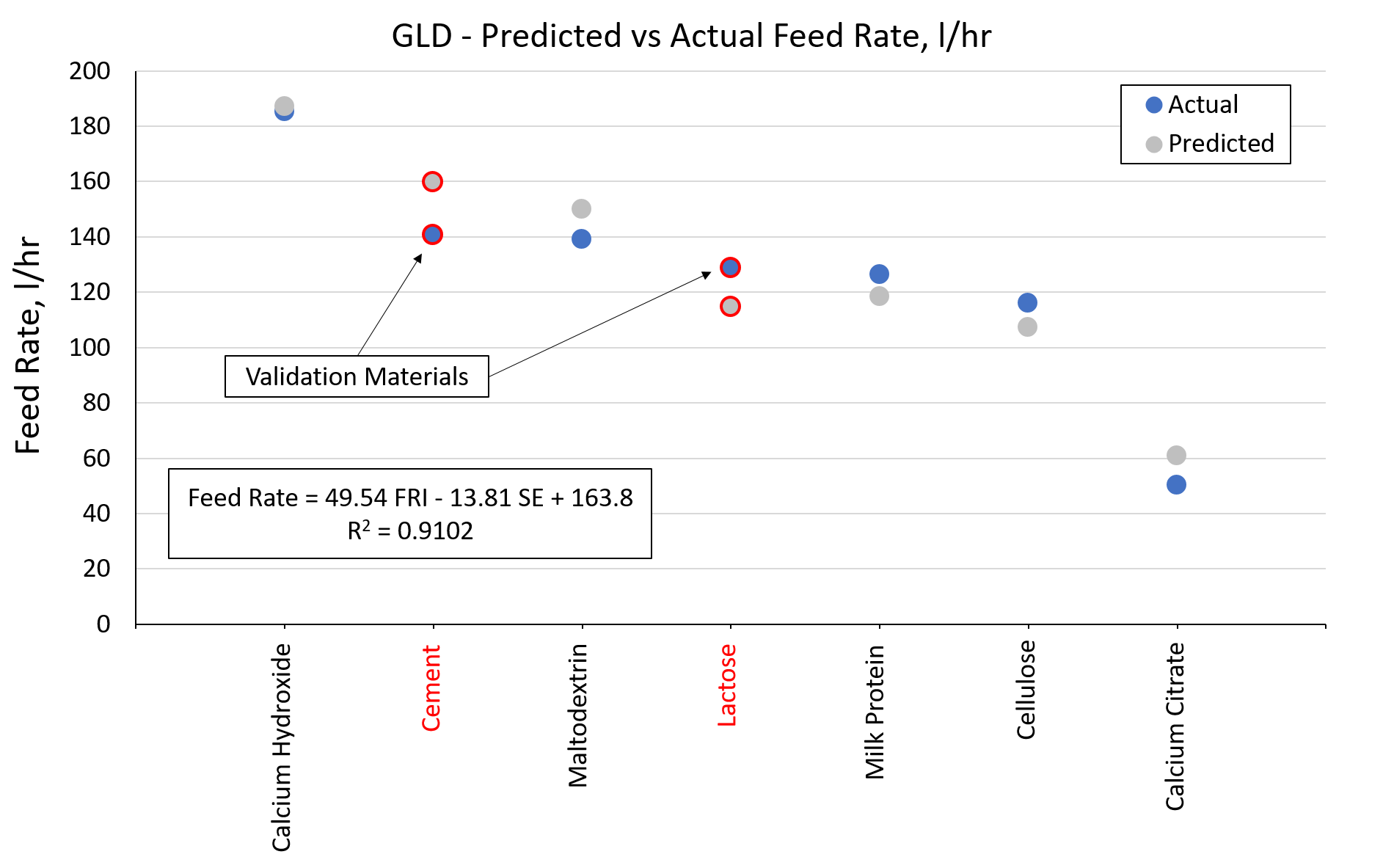
Figure 4 - Predicted vs Actual Feed Rate in the GLD Feeder for All Seven Materials
Results – GZD Feeder
The same process was repeated to derive a model that could be used to predict performance in the GZD feeder. A simpler correlation was observed with Aerated Energy (AE) the only parameter found to be relevant.
Feed Rate = -0.1114 AE40 + 34.82
(R2 = 0.8383)
AE is the flow energy of the material measured as the sample is aerated by air flowing through it at a defined linear velocity - in this case 40 mm/s, hence AE40. Cohesive powders typically generate higher AE values, since aeration does little to alter the packing structure of the bed. For free-flowing powders. AE can approach 0 mJ as the powders fluidize. The materials tested exhibit a broad range of AE values, but a robust relationship between AE and volumetric feed rate holds for all materials.
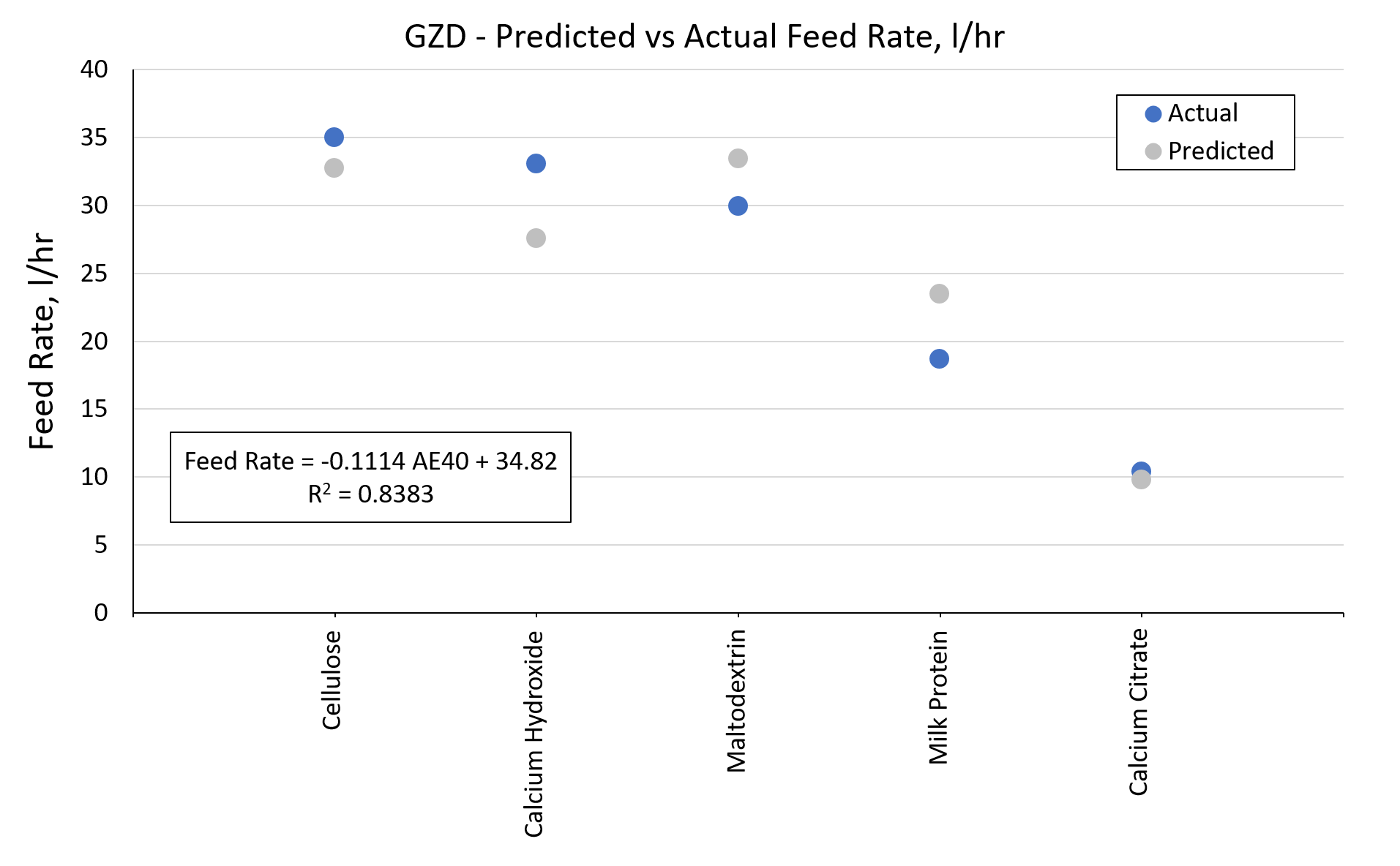
Figure 5 - Predicted vs Actual Feed Rate in the GZD Feeder
Figure 5 shows the actual feed rates for the five powders along with the values predicted by the derived model. As confirmed by the R2 value, the predicted values again accurately describe the performance of the powders in the GZD feeder. As with the GLD feeder, the study was extended to verify the ability of the model to predict the volumetric feed rate achieved with cement and lactose (Figure 6). As before, the model again performed robustly in this predictive mode.
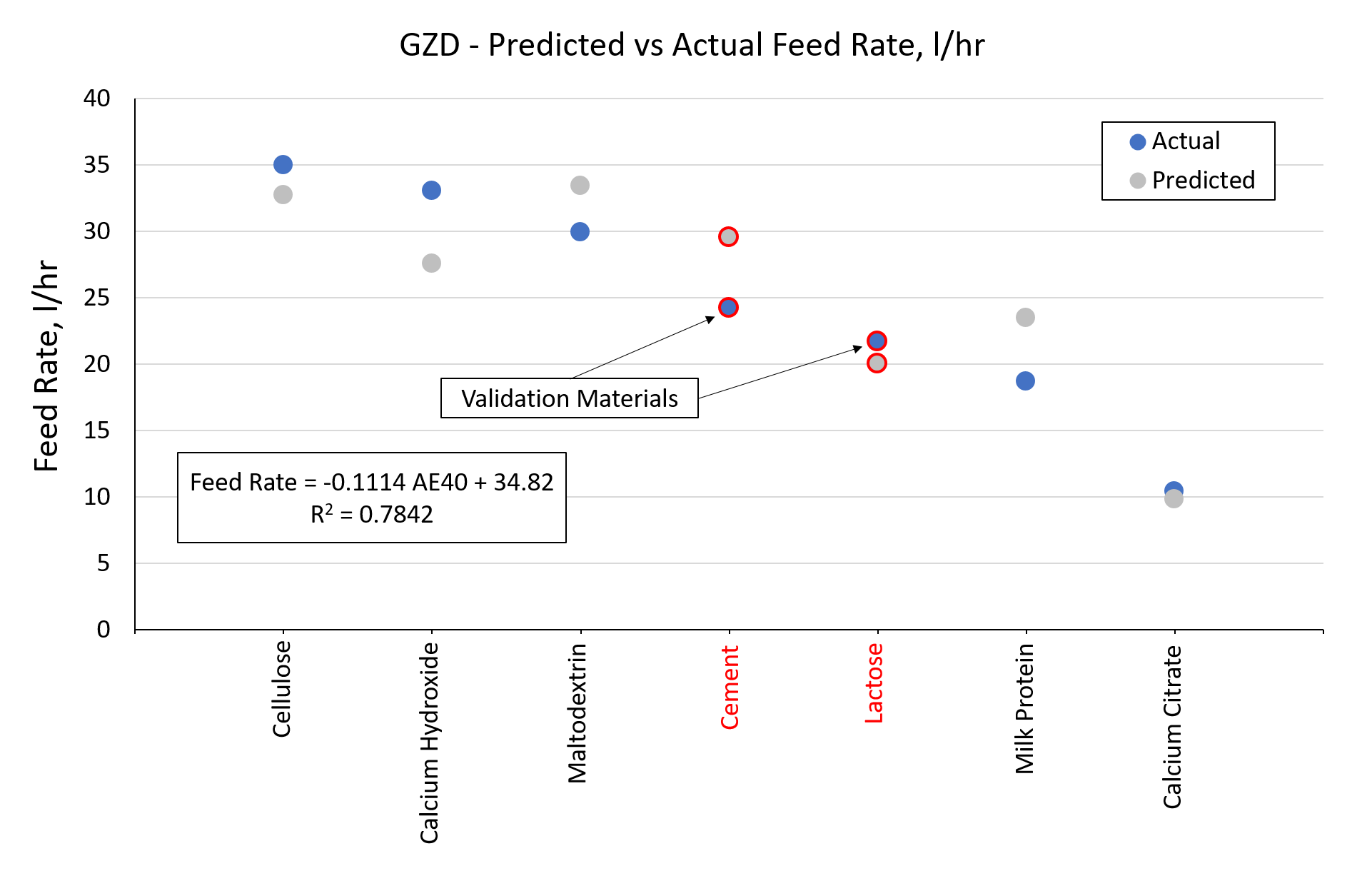
Figure 6 - Predicted vs Actual Feed Rate in the GZD Feeder for All Seven Materials
Conclusion
The results from this study demonstrate the feasibility of identifying robust relationships between measurable powder properties and the volumetric feed rate obtained with different designs of screw feeder. Each screw feeder imposes different conditions on the powder and this is reflected in the specific attributes of the powder that are found to be relevant for predicting performance. This demonstrates how a single number, or even a single technique, is not sufficient to thoroughly describe powder behaviour in the variety of operations employed in typical powder handling applications.
This approach can be more broadly applied to determine correlations for predicting the performance of a wide range of powder processing equipment. Multi-faceted powder characterisation provides an essential foundation for such work, enabling the properties that are most relevant to in-process performance in any unit operation to be identified and quantified.
Author Biography - Tim Freeman, Managing Director, Freeman Technology

Tim Freeman is Managing Director of powder characterisation company Freeman Technology for whom he has worked since the late 1990s. He was instrumental in the design and continuing development of the FT4 Powder Rheometer® and the Uniaxial Powder Tester. Through his work with various professional bodies, and involvement in industry initiatives, Tim is an established contributor to wider developments in powder processing.
Tim has a degree in Mechatronics from the University of Sussex in the UK. He is a mentor on a number of project groups for the Engineering Research Center for Structured Organic Particulate Systems in the US and a frequent contributor to industry conferences in the area of powder characterisation and processing. A past Chair of the American Association of Pharmaceutical Scientists (AAPS) Process Analytical Technology Focus Group Tim is a member of the Editorial Advisory Board of Pharmaceutical Technology and features on the Industry Expert Panel in European Pharmaceutical Review magazine. Tim is also a committee member of the Particle Technology Special Interest Group at the Institute of Chemical Engineers, Vice-Chair of the D18.24 sub-committee on the Characterisation and Handling of Powders and Bulk Solids at ASTM and a member of the United States Pharmacopeial (USP) General Chapters Physical Analysis Expert Committee (GC-PA EC).


Contact Us
Tel: (+86) 400 610 1188
WhatsApp/Telegram/Wechat: +86 13621645194
Follow Us:




 Pharma Sources Insight January 2025
Pharma Sources Insight January 2025


